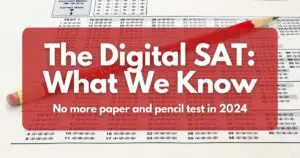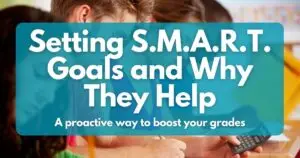Summary
In today’s lesson, we encourage student to stop cramming and start using spaced learning. Cramming is not a great way to study, as it does not help to retain information in the long term and is not a very efficient way of learning. Spaced learning, also known as distributed practice, is a better way to learn as it helps to retain information more effectively. Spaced learning involves breaking up studying into smaller chunks and spreading them out over time.
Transcript
[0:00:03] In today’s lesson, we’re going to talk about step number three in making you a better student, and why cramming doesn’t work, and what you can do instead of cramming. Now let’s just think about that for a second and what that really means when I say cramming doesn’t work. Cramming for a quiz or a test can get you a pretty good grade on that quiz or test, but it’s not very good at getting the information into your brain in the long term. And you really do want to retain that information for future quizzes, future tests. A lot of material in many, many classes is cumulative.
[0:00:36] Even in the history class, if you learned about something that happened in the 1600s, the concepts from that might be applicable in the 1800s. So cramming is not a great way to study. It’s also not the most efficient way to study. So what we’re going to be talking about today is something called spaced learning, also known as distributed practice. Studies have shown that this is one of the most effective ways to get material into your head over the long term. What you do is study in short, intensive sessions, spread over time with gaps in between the sessions. So you can start days, weeks, even months before a test or an exam, and periodically review important older material, whether it’s four days old or four weeks old or four months old.
[0:01:23] For distributed practice, for space learning to work effectively, you want to actually create a schedule. So let’s say you have a history test coming up in three weeks and you know that it’s going to be on this material you’re studying over the next three weeks. To set up a schedule for yourself, say every three to four days, to review all the previous material in the class and to go over, you know, making—we already talked about writing things down—making study guides and things like that.
[0:01:49] But to review that in short, intensive sessions and then just periodically review. So review, leave it for a couple of days, review, leave it for a couple of days, review. You want to mix up your study techniques, too; sometimes you’ll be looking over your notes, sometimes you’ll be creating a study guide, looking at a timeline…all these different types of techniques that you would use normally you want to mix up.
[0:02:11] And that space learning, where you learn it, you give some space, you relearn it, you give some space and you relearn it, really gets the information into your head incredibly effectively. It turns out that the longer the gaps between the time you learn this material, the more effective the learning is. Here’s the other key: If you do space learning in these short, intensive sessions over a longer period of time, you’re probably going to end up spending less time, or certainly no more time than you would cramming all night before a test or a quiz. But you’ll have that information ingrained in your brain much, much more effectively.
[0:02:46] : Next time, I’m going to reveal to you two of the most effective study techniques that you can do to prepare in any class. Now, these techniques techniques can be part of your regular distributed practice, and they should be. Thank you for watching. And for more information you can go to our website for more videos on our blog or subscribe to our YouTube or Instagram feeds. And don’t forget, Aim Higher!





